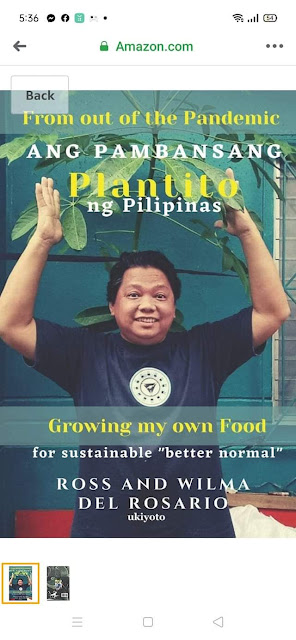Wazzup Pilipinas!?
Beneath our feet lies a silent sentinel of life—groundwater, quietly sustaining crops, communities, and ecosystems across the Philippines. But while this hidden resource may not roar like a river or shimmer like a lake, it is screaming for our attention.
In an era of intensifying climate shifts, increasing population pressure, and aggressive land conversion, the Philippines faces a growing crisis beneath its surface. Groundwater—once abundant and untainted—is under siege. And a new study led by Dr. Francis S. Magbanua of the University of the Philippines Diliman College of Science, Institute of Biology (UPD-CS IB), sheds new light on how seasons and land use are conspiring to change the very essence of our water.
A Lifeblood Threatened
The story begins with a simple truth: most Filipinos rely on groundwater, especially in rural areas where wells and springs nourish farms and families alike. But this lifeblood of agriculture and domestic life is increasingly contaminated—not just by pollution, but by neglect and ignorance.
During the wet season, rain pours generously over our fields, washing nutrients and minerals deep into the soil. Yet, what might seem like nature’s gift can also carry toxins from pesticides and fertilizers into aquifers, especially in agricultural areas. Conversely, in the dry season, the scarcity of rainfall means groundwater warms and stagnates, concentrating harmful substances in the water we drink and use every day.
It’s a delicate dance between land and season, and as this study reveals, our steps have gone clumsy—if not destructive.
The Study: What Lies Beneath
Spanning five provinces—Ilocos Sur, Benguet, Nueva Ecija, Cebu, and Davao del Norte—the research team investigated how different land uses (agricultural vs. forested) and seasonal changes (dry vs. wet) independently affect groundwater quality. Their tools? Wells, springs, multimeters, and the unrelenting curiosity of science.
The results were stark:
Agricultural areas had warmer, more chemically infused groundwater with higher risks of contamination from fertilizers and pesticides.
Forested areas, in contrast, yielded cooler, cleaner, and more oxygenated water. But even they were not immune to change—steep terrains contributed to the presence of organic matter, hinting at disturbances even in nature’s supposed sanctuaries.
Seasonal variation played its own role: wet seasons introduced minerals and organic matter, often improving pH and oxygen levels, while dry seasons brought higher concentrations of dissolved ions and temperature spikes, deteriorating overall water quality.
Yet, in an intriguing twist, land use and seasonality did not magnify each other’s effects. They influenced groundwater quality independently, which is a clarion call to address both factors simultaneously but distinctly.
Why This Matters
Let’s not mince words—groundwater is vanishing in both quantity and quality. As our cities expand, farmlands multiply, and forests fall, we are drilling deeper, drawing more, and monitoring less. This is no longer a hypothetical future. This is a present-day emergency.
“Groundwater is a limited resource, and its quality is steadily declining,” the researchers warned. And with that decline comes a domino effect: public health hazards, loss of biodiversity, failed crops, and a water-insecure nation.
The presence of dissolved organic compounds (DOC) even in forested sites is a red flag that no land type is safe from human disturbance. This study not only uncovers the cracks in our water system but also lays the scientific foundation for urgent reforms.
The PGHI Project: A National Lifeline
This research is part of the Philippine Groundwater Health Index (PGHI) Project, a critical national initiative funded by the Department of Science and Technology (DOST) and supported by the DOST-Philippine Council for Agriculture, Aquatic, and Natural Resources Research and Development (PCAARRD).
Their mission is clear: establish a nationwide system of monitoring and safeguarding groundwater before it’s too late. The project’s on-ground approach—analyzing both forested and agricultural sites across seasons—provides the empirical backbone for what could become a transformative water management policy.
Our Call to Action
This is more than just a scientific study. It is a wake-up call.
We must not treat groundwater as an infinite, indestructible asset. It is fragile. It is finite. And it is ours to protect—or lose.
The Philippines, blessed with rain and fertile land, must now match its natural gifts with responsible stewardship. From local governments to national agencies, from farmers to urban developers, every stakeholder must invest in practices that protect our subterranean lifeline.
Groundwater may be hidden, but the consequences of our inaction will be painfully visible.
Let us act now. For the water we cannot see... may soon be the water we can no longer drink.
For more information, read the full research paper titled “The Hidden Crisis: Groundwater Quality in the Philippines and Why It Matters” by John Kenneth R. Fraga.






















 Ross is known as the Pambansang Blogger ng Pilipinas - An Information and Communication Technology (ICT) Professional by profession and a Social Media Evangelist by heart.
Ross is known as the Pambansang Blogger ng Pilipinas - An Information and Communication Technology (ICT) Professional by profession and a Social Media Evangelist by heart.






.jpg)





Post a Comment